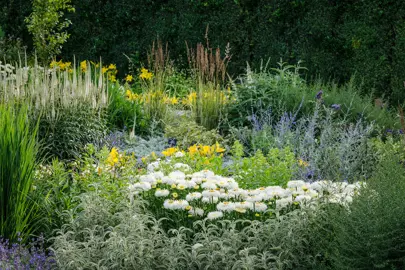
The Plant Company grows, sells, and ships Persicaria plants throughout NZ. We pride ourselves on producing high quality plants and seeing the joy from our customers when they receive them. We do hope you enjoy them and support this NZ business that is passionate about Persicaria plants.
The Persicaria Red Dragon plant, commonly known as Knotweed, is a small shrub grown for its beautiful foliage. It carries elongated leaves that are...
Growing colourful shrubs in your garden delivers a vast range of benefits:
We have the largest variety of Persicaria plants and the right one for your space. Our plants have been selected to thrive in NZ’s climate. We grow and stock only the highest quality plants, sourcing them locally, and from NZ’s leading nurseries. Each plant is packed and transported with extreme care, ensuring it arrives to you in the same condition it was in when it left the nursery. If you are wanting to buy Persicaria, shop with confidence from the best in the industry.
1. What are the conditions for Persicaria?
Persicaria plants are generally easy to care for and can thrive in a variety of conditions. Here are some ideal conditions for them:
2. What plants go well with Persicaria?
Persicaria plants are versatile and can be paired with a variety of other plants to create beautiful and complementary combinations. Here are some suggestions for plants that go well with Persicaria:
When selecting plants to pair with Persicaria, consider their height, color, and bloom time to create a harmonious and visually appealing combination.
3. What is Persicaria used for?
Persicaria plants have a wide range of uses, including ornamental, medicinal, and culinary applications. Here are some of the specific uses of Persicaria:
Ornamental Use:
Persicaria plants are widely grown as ornamental plants due to their attractive foliage and colorful blooms. They come in a variety of shapes, sizes, and colors, making them suitable for a wide range of garden designs. Some popular Persicaria species for ornamental use include:
Medicinal Use:
Persicaria plants have been used in traditional medicine for centuries to treat a variety of ailments. Some of the medicinal properties attributed to Persicaria include:
It is important to note that scientific evidence supporting these medicinal claims is limited. Always consult with a healthcare professional before using Persicaria plants for medicinal purposes.
Culinary Use:
Some species of Persicaria are edible and can be used in cooking. The leaves and stems of some species can be eaten raw or cooked, while the seeds of some species can be used to make flour or porridge. Some edible Persicaria species include:
It is important to be careful when consuming Persicaria plants for culinary purposes. Some species can be poisonous if consumed in large quantities. Always consult with a knowledgeable source before consuming Persicaria plants.
Overall, Persicaria plants are versatile and have a variety of uses, making them valuable additions to gardens, medicine cabinets, and kitchens.
Whether you need assistance finding the plant you’re looking for or you simply want to know more about who we are and what we do, we invite you to get in touch with us today. A member of The Plant Company team will get back in touch as soon as possible.


